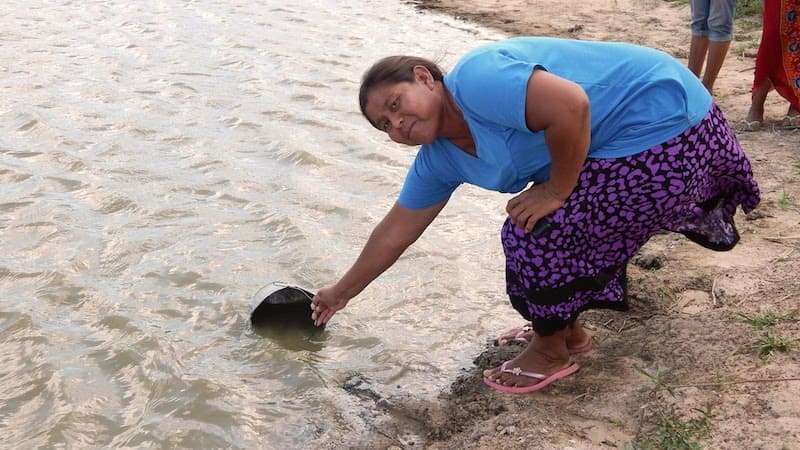Living without water
The Central Chaco is a fertile land, which has not yet suffered from the over-exploitation of other regions. It houses a portion of the largest dry forest area in South America, with its dry season spanning from June to December. During the dry season, the landscape is characterized by cracked soil without pastures, almost empty cutwaters, and cattle packed in under the canopy of the algarrobo trees (prosopis), to escape the sun.
Low population density in the area is a reflection of the harsh conditions and one of the reasons why, often, the help of the State does not arrive.
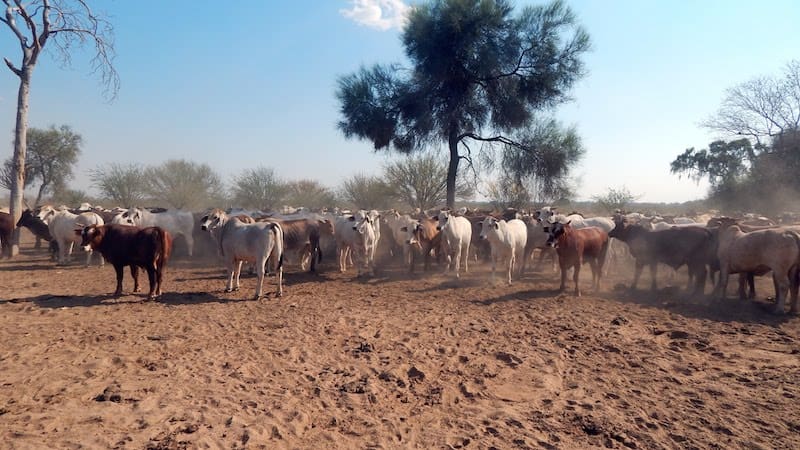
Chaco is also home to many native peoples of Paraguay. In El Estribo, one of the indigenous communities in the municipality of Lieutenant Manuel Irala Fernández, many men are engaged in agriculture, beekeeping and, to a lesser extent, livestock.
During the dry season it is impossible to grow anything and the community resorts to the forest to sustain itself. At noon, women head out in search of wild fruits or fish; anything nature can provide to feed their families. In the afternoon, they walk two kilometers to gather water and firewoods, which they bring in buckets on their heads.
Felicita Villalba, President of El Estribo Women Organization, works as a midwife and a health and nutrition promoter. With her knowledge of natural medicine she partly alleviates the lack of doctors in the community.
With the fruit of the prosopis tree we make flour and juices for the children. We also bring honey from the forest, medicinal plants, fiber and seeds. This forest is very important to us, it gives us a lot of food, and without it we too would disappear.
Hearing and voicing the community
Despite being used to this harsh reality, at the end of 2017 El Estribo suffered one of its most severe droughts. Esteban, another leader of the El Estribo community, urges the need for government cooperation in reaching sustainable solutions.
We have been in this community for 32 years and since its founding in 1985 we have tried to work with the government and the Paraguayan Indigenous Peoples Institute (INDI), but have not received many solutions regarding the specific needs of the community.
"Within the platform we are now working with the municipality and the regional government. Every month, we hold meetings to look for the means and ways in which we can help improve the situation in the community.”
Today, the Chaco Sustentable landscape governance body includes authorities from the local (Irala Fernandez) and regional government (Presidente Hayes), three cooperatives, a committee of small dairy producers, and the two indigenous communities “El Estribo” and “Diez Leguas”.
The leaders of El Estribo hope the youth will undertake a more active role in the future of the municipality. Felicita underlines the accessibility to education as a key factor in reaching this end.
In the near future there may be indigenous candidates to represent us in authority roles. Currently, we have lawyers and people training to be doctors thanks to the support of private institutions that allow our sons and daughters to finish their studies.
"Something very important for us is to instill in our children the love for studying and see it as a form of personal and community development. That teaching is what I try to give my children every day, encouraging them to strive to be better and, through them, to reach better times for the whole community."
With this in mind, people from the community are taking part in the training organized by Chaco Sustentable to train local technicians in climate-smart agricultural extension services. Gerardo Galeano is one of the representatives of indigenous communities that participated in the training.
Learning to be climate resilient
Technician training is one of several activities Chaco Sustentable is carrying out with indigenous communities. The end goal? To install a climate-smart agricultural model that guarantees their food security and, at the same time, provides them with a source of income. This model is based on:
- Creating school orchards
- Creating community plots for self-consumption crops
- Growing sesame for income generation
- Improving the capture of rainwater.
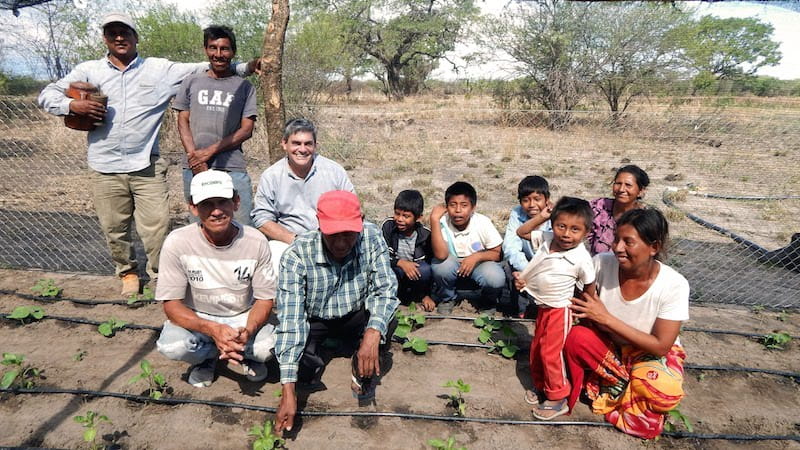
Taking advantage of the network of schools in El Estribo and Diez Leguas communities, Chaco Sustentable has installed drip irrigation systems into eight school orchards to avoid excessive use of water.
The orchards provide fresh organic vegetables that complement the ready made meals that childrenreceive at school, adding minerals and nutrients to their diets.
Last month, the project held a set of training sessions for students. With this training, students can look after the orchards during school hours. Carlos Florentín, Chaco Sustentable field coordinator suggests that the training will bring about a positive chain of effects.
Children learn to prepare the soil, seed, prune and harvest. In addition, they learn about the nutritional properties of what they harvest.
"This way they learn by doing and grow up knowing, so that they can take home, not only the surplus of the orchards, but the knowledge to set their own family orchards and initiate a multiplying effect.”
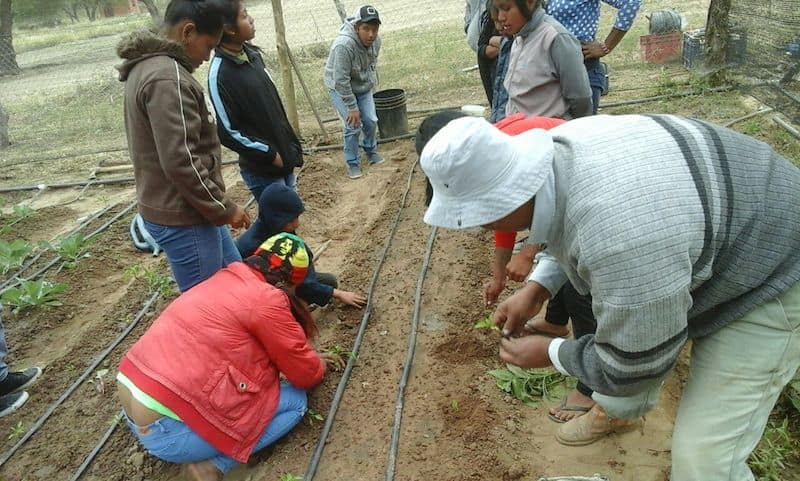
Between December 2017 and January 2018, the project supported the planting of around 300 hectares of sesame with machinery lent by the government.
Although floods in March withered 30% of what was planted, the communities were able to harvest 63,418 kilograms of sesame between May and June.
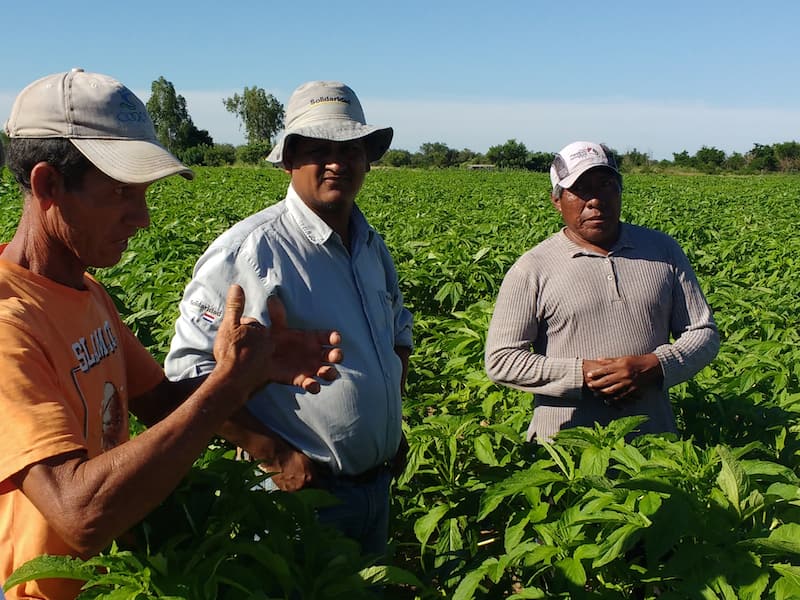
After the harvest, the project also facilitated contact with Shirosawa, a company dedicated to the export of sesame for the Japanese market, to buy the communities’ crops. Carlos sees the importance of direct contact between the communities and their buyers
It is the first time that the leaders of the communities negotiated the price of their production without intermediaries with a company. That was the final touch in gaining the community’s trust for the project.
The revenues from sales amounted to 401 million guaraníes in the case of
El Estribo (around USD 71,000). From these revenues, three million guaraníes have already been set aside as the community contribution for the next planting, that will start in December 2018. The rest was distributed to buy food for the winter and clothes between 263 producers and their families.
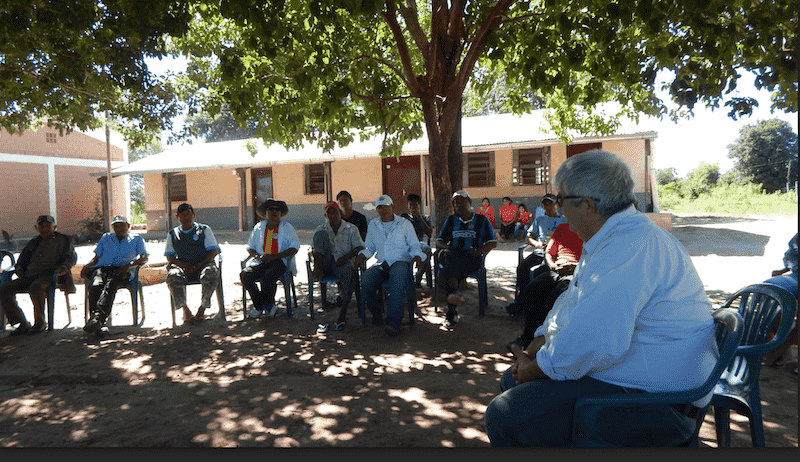
Finally, the community plots provided a broad harvest of sweet potatoes, beans, corn and squash, among others. This, in addition to ensuring the food security of the families, allowed them to sell the surplus as an alternative income source to sesame.
On 12 June 2018, the first indigenous communities fair in Central Chaco was organized outside the front of the municipality with support from FAO. There part of the harvest was sold, along with crafts made by the communities, with sales that amounted to an additional $1,270 USD.
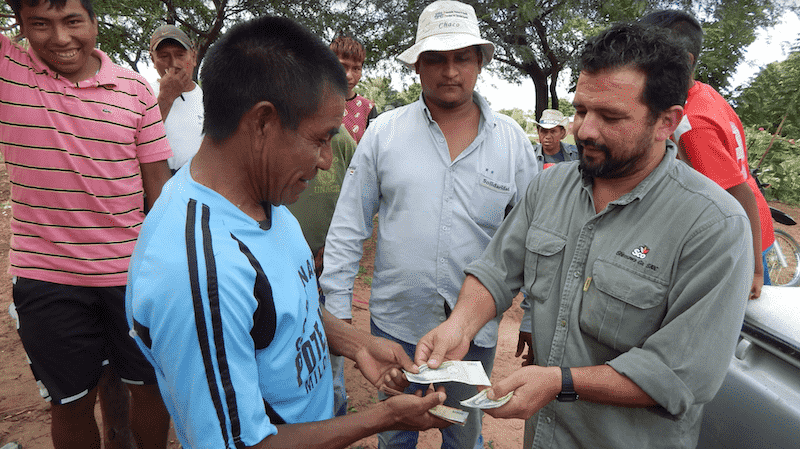
The next steps
In addition to planting 500 new sesame hectares and 140 hectares of crops for family consumption in December 2018, the project started two 18,000 m3 water ponds to harvest rainwater. They were built in locations with good availability of clay to ensure rainwater will not leak at the bottom. They will also have a fence of woven wire to prevent the entry of animals. Esteban says:
In the Chaco almost all year we live a situation of total drought. El Estribo has only one large cut water tank. To bathe or wash clothes we use dirty water because we do not have somewhere to bring clean water from and we must rationalize the use of the little water we have.
Felicita adds: "The cut water pond is a big issue for the community since the one we have now is 35 years old. It is filled with earth and no longer as deep as it should be, and it is the main cause of diseases."
The ponds will provide the community’s ten villages with an emergency water reservoir, in case the next dry season exceeds expectations.
